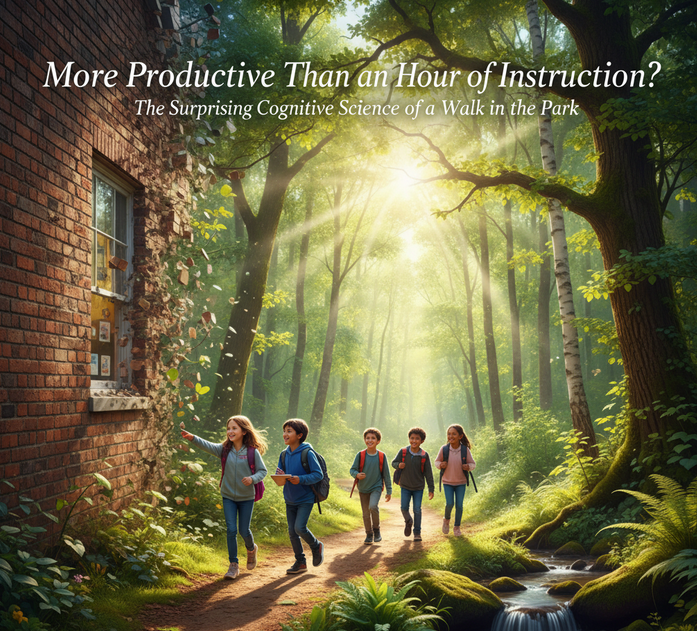More Productive Than an Hour of Instruction?
The Surprising Cognitive Science of a Walk in the Park

The capacity for intense focus in our students is a finite resource—a cognitive fuel tank that can, and does, run low. We see the results in the classroom: irritability, impatience, and a fraying of impulse control. But what if one of the most powerful tools for refueling that tank wasn't a new pedagogical strategy, but something far more fundamental?
Five years ago, I wrote about the profound impact that greenery can have on health and learning in The Influence of Greenery on Learning. When I recently listened to Dr. Marc Berman, Director of the Environmental Neuroscience Lab at the University of Chicago, expand on this research on the Many Minds podcast, it prompted me to revisit that post. I was humbled to realize how many of his foundational studies I had completely overlooked. This new understanding reveals that nature is not just an amenity, but a necessity for cognition.